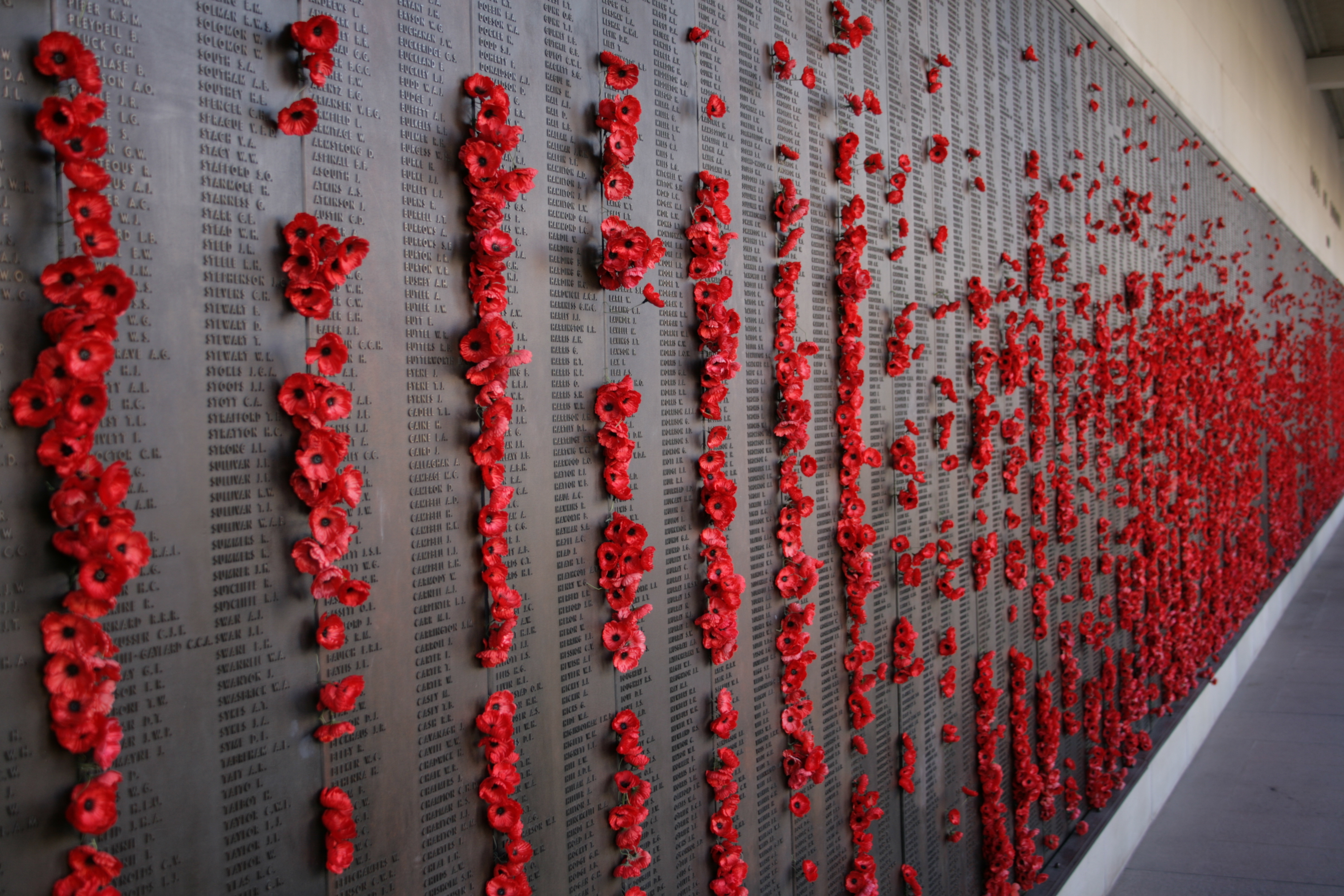 The Hall of Memory stained glass windows
The Hall of Memory stained glass windows
Designed by Napier Waller each one of the Hall of Memory’s fifteen stained glass windows represents a defining quality of Australian servicemen and women, incorporating images of Australian soldiers, airmen, sailors and a nurse, all from the First World War. The windows are divided into three sets of qualities.
The South Window represents personal qualities.
Resource: an aircraftsman. Symbols are a clamp vice, an electric arc, the sword severing the Gordian Knot, and the flame of invention.
Candour: a signaller. Main symbol, the open flower. Above, an owl’s head fountain and three arrowheads suggest frankness of expression.
Devotion: a nurse. Symbols, the Red Cross; the Australian coat of arms; and the sign of charity (the pelican feeding her young from her bleeding breast).
Curiosity: the uniform is that of a trench-mortar battery. The Winged Crown denotes reward of knowledge from inquiry. Above is the symbol of “The Inquiring Eye”.
Independence: a naval captain. Details a gyroscope (a striking feature of which is that when set rotating it maintains, independently, its set direction), and the “Stand-off” signal (three red lamps vertical).
The West Window represents social qualities.
Comradeship: a Lewis gunner. The “music pipes” (the reed Pipes of Pan) clustered and bound together are symbols of fellowship and good cheer (the ancient symbol for unity was a bundle of bound twiggs).
Ancestry: a naval gunner in anti-flash helmet and gauntlets. The wreath indicates reverence for the renowned; the book, traditional knowledge; cricket stumps and ball, traditional recreation; church spire, the European tradition of Christianity. The naval flag mans “Engage the enemy at close quarters”. Above is the naval crown.
Patriotism: an infantryman. The stars of the Southern Cross are superimposed. “Trumpet-shafts” denote the urge for service and love of country. Above are the crown, orb and lion.
Chivalry: an airman. The symbols are medieval - the rose of chivalry, tilting spurs, visored helmet and the Cross of St. George denoting generosity to a conquered opponent.
Loyalty: artilleryman holding director. Symbols, the AIF badge with “AIF” superimposed. Above, a column with flames (loyalty to a cause or ideal).
The East Window represents fighting qualities.
Coolness: (in action, especially in crisis) - an infantry officer in trench-coat. The Prismatic symbol and the “shield of Medusa” above stand for coolness and confidence when facing adverse situations.
Control: (of self and others) - an infantryman in greatcoat. The symbols are a ratchet wheel, calipers and measured square; above, the shepherd’s crook and crossed sword and baton.
Audacity: - a lighthorseman. The quality is symbolised by a “winged energy”; and above by and alighting eagle and ascending arrowheads.
Endurance: - a wounded soldier with broken “shard of war”. Symbols - the pyramid, and, below, the column carved in rock, both denote stability and physical endurance.
Decision: - an Australian soldier in dress worn at ANZAC. A target, bared sword and emblematic spear all denote directness in carrying out an aim.
